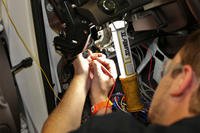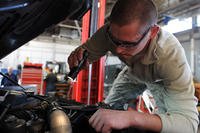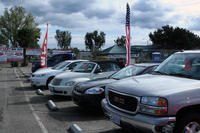In another timeline, somewhere out there in the multiverse, Porsche is not only the leading name in driver-oriented coupes, but in European-made pickups and SUVs, as well. Now, we know what you're thinking, "you automotive writers will say any stupid thing to get a reaction, no matter how ridiculous," but hear us out...
The modern American automotive market would be unrecognizable had the Jeep "army truck" not laid the groundwork for modern SUVs like the Toyota RAV4, right? Well, back in the post-war era, Porsche actually pitched its own version of the Jeep to the German military. It's not hard to imagine how that could have affected the European industry as a whole.
The German army would go with the DKW Munga, instead. The deal didn't do too many favors for DKW, a now-defunct brand under Audi ownership, but things would likely have played out very differently had Porsche already been building 4x4 off-roaders since the 1950s. Or, maybe the Porsche army truck would have been just a one-off oddity in the brand's portfolio. Either way, it's a shame the Porsche 597 never made it to mass-production.
A Look At The Porsche 597

The Porsche 597 is also known as the Jagdwagen, or hunting car. The original prototype version of the truck packed an air-cooled flat-four borrowed from the Porsche 356, and mounted in the back of the vehicle. At some point, the 1.5 was swapped out with a 1.6.
| Porsche 597 Jagdwagen | |
| Engine | 1.6-Liter NA Boxer 4-Cylinder |
| Power | 50 hp |
| Drivetrain | All-Wheel Drive |
| Transmission | 4-Speed Manual |
To run down some technical specs.
- The wheelbase stretched just 81 inches from axle to axle, enabling mountain-goat-like climbing up near-vertical surfaces.
- The vehicle had a top speed of around 62 mph.
- Total weight came in at just 2,403 lbs, at the heaviest.
- The most common body, a product of Porsche's Stuttgart Body Works, was a one-piece shell with no doors, theoretically allowing the car to operate as a boat. The 597 was also built with conventional doors.
- The transmission featured a drive shifter to switch from two to four-wheel drive on the fly.
Like the original Jeep Army Trucks, the Porsche 597 was notable for its nimble dimensions, weighing in at barely a full ton at the lightest, with a wheelbase stretching about the height of a typical bedroom door. The Jagdwagen was thus perfect for anything from narrow woodland passages to rocky beaches and muddy creek beds. For reference, the wheelbase of a 992-generation Porsche 911 stretches 96.5 inches, and the hunting car comes in more than a foot short of that number, making it a better fit for jungle crawls than even a Porsche 911 Dakar.
What Became Of The DKW Munga?
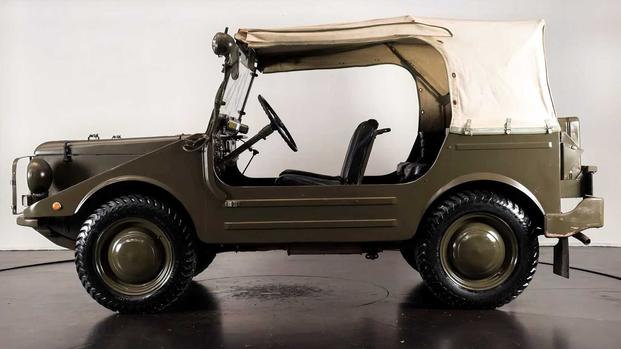
As mentioned, the DKW Munga's producer, DKW, wasn't long for the industry, with or without a military contract to support the truck. But what of the truck itself?
Munga was short for Mehrzweck Universal Geländewagen mit Allradantrieb, a German phrase that translates to something like "multipurpose universal off-road vehicle with all-wheel drive". Since Mehrzweck Universal Geländewagen mit Allradantrieb doesn't fit on the side of a truck, they went with Munga. So if you were curious, no, they didn't have a caveman in charge of naming new models.
The Munga went into production for military use in 1956.
| 1956 DKW Munga | |
| Engine | 1-Liter NA 3-Cylinder |
| Power | 40 hp |
| Drivetrain | All-Wheel Drive |
| Transmission | 10-Speed Manual |
The Munga was a permanent all-wheel drive with a 10-gear transmission for eight forward gears, and two reverse, with a top speed of around 61 mph. The Munga was available in a variety of body types, including the four-seat Munga 4, the Munga 6 pickup truck, and the Munga 8, a long-wheelbase pickup truck.
The Munga had some success outside Germany, going into production in São Paulo, Brazil, as the DKW Candango, by subsidiary DKW-Vemag until 1963. The last DKW car rolled off the assembly line in 1966, but the writing was already on the wall by that point. The brand was bought by Volkswagen from Daimler-Benz in 1963, and it didn't take VW long to make the decision to close the company. DKW-licensed cars would still be sold in Brazil and Argentina until the late 1960s, but by this point the possibility of a resurgence for the brand was simply out of the question.
The Jagdwagen Saw Very Limited Production
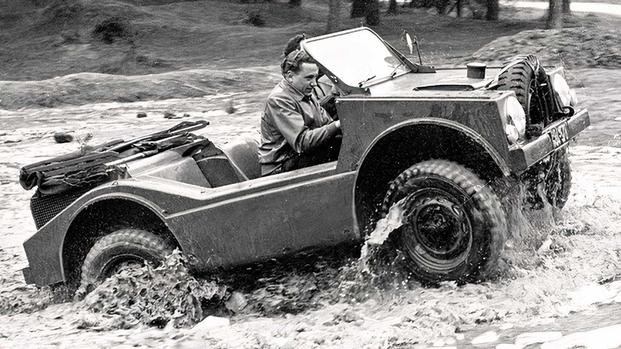
The Porsche 597 prototype was built in 1953. This was the truck that the German Federal Armed Forces rejected, citing production costs and volume concerns. That is, Porsche simply wasn't built to produce these trucks by the thousand, like Ford had done with the original Jeep Army Truck.
Development costs for the truck came out to 1.8 million Deutsch mark. Converting that to USD and adjusting for inflation, that's somewhere around $5 million in 2025. Unwilling to simply dump the investment of money and elbow grease, Porsche set about producing the vehicle in very limited numbers. From 1955 to 1958, the company manufactured 49 units for the civilian market, with a reported 20 extra also produced.
As late as 1959, Porsche still wasn't quite ready to give the truck up, and there were talks of extending the wheelbase, strengthening the chassis, and making the 597 available in a range of body styles. This idea was ultimately scrapped, and Porsche's brief stint as a truck-maker in the 1950s would be all but forgotten.
Things Probably Worked Out For The Best
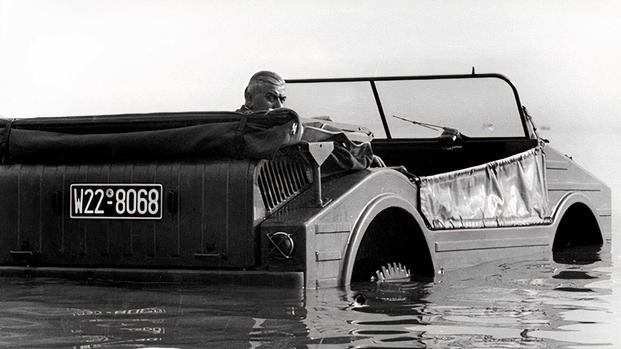
Based on the fact that securing a military contract didn't do much for DKW's longevity, and considering where Porsche is today as the gold standard of building cars that prioritize the driver experience above all, it's difficult to argue that a mass-produced 597 would have been in the brand's best interests.
We can kick around our "what if" hypotheticals until the sun goes down: Would the Land Rover have been such a big deal had Porsche built one of Europe's first SUVs? Would the Porsche Cayenne have ever been drafted? Would Porsche see a need to introduce the Dakar if they already had the off-road scene covered with the hunting car? The answer to all of those questions is the same: who the heck knows?
It would have been cool to see the Porsche equivalent of the Jeep Army Truck hit the market in a mass-production capacity, but history went in a different direction, and we're probably better off for it.
If you ever want to see what it feels like to drive a Porsche Jeep, look up the Porsche Jagdwagen Registry e.V., a very small club for 597 owners, presumably all German speakers, with no internet presence whatsoever. If you can get in touch with these owners, maybe you can talk one of them into selling theirs. But we wouldn't bet on it. The last time one of these trucks went on sale appears to be a Bonhams auction which closed at around a quarter of a million dollars.
This article originally appeared on CarBuzz and is republished here with permission.







